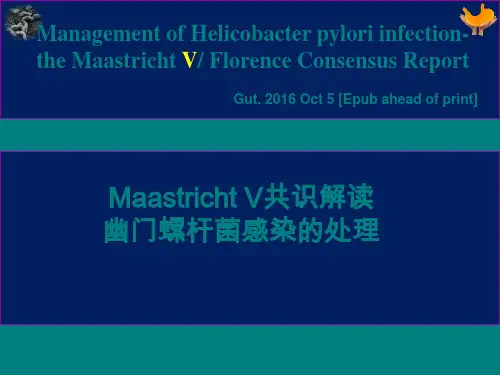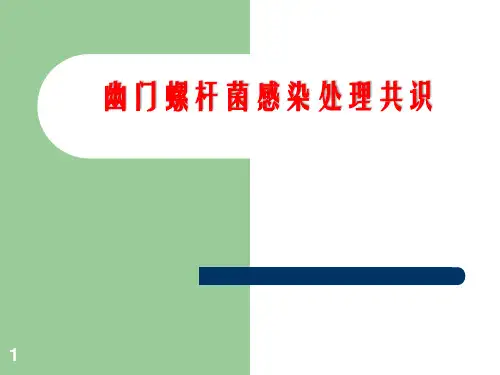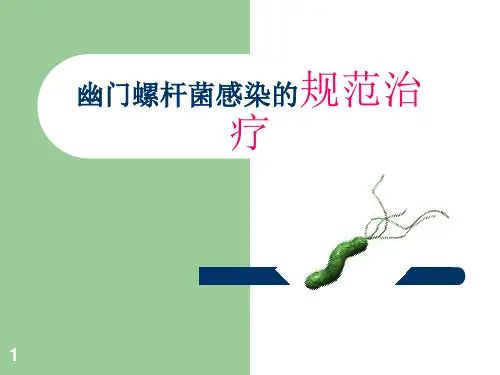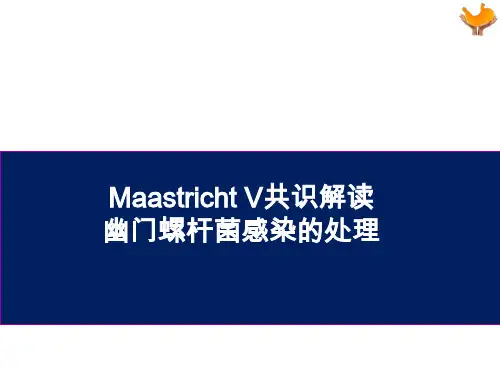maastricht-v共识解读-幽门螺杆菌感染的处理ppt课件
- 格式:ppt
- 大小:12.67 MB
- 文档页数:60
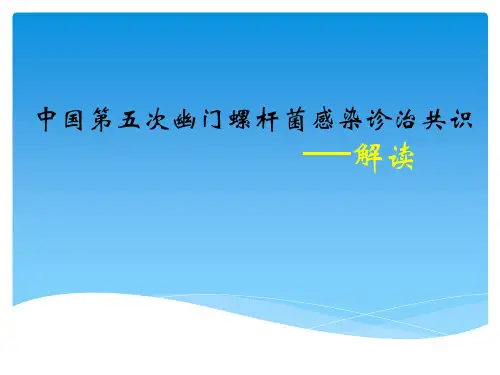
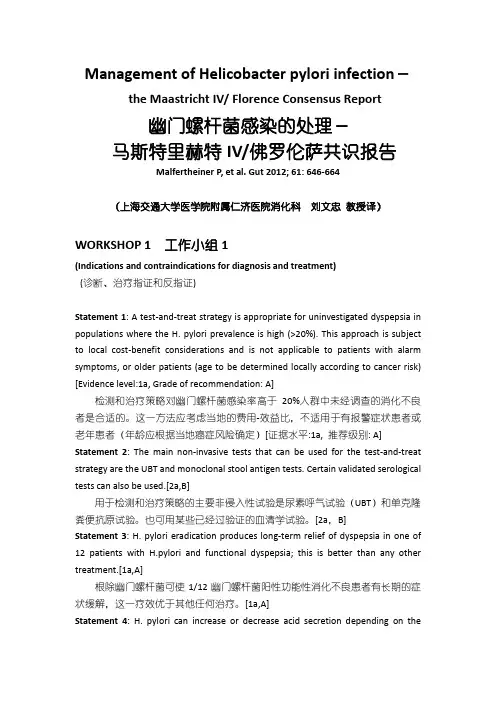
Management of Helicobacter pylori infection-the Maastricht IV/ Florence Consensus Report幽门螺杆菌感染的处理-马斯特里赫特IV/佛罗伦萨共识报告Malfertheiner P, et al. Gut 2012; 61: 646-664(上海交通大学医学院附属仁济医院消化科刘文忠教授译)WORKSHOP 1 工作小组1(Indications and contraindications for diagnosis and treatment)(诊断、治疗指证和反指证)Statement 1: A test-and-treat strategy is appropriate for uninvestigated dyspepsia in populations where the H. pylori prevalence is high (>20%). This approach is subject to local cost-benefit considerations and is not applicable to patients with alarm symptoms, or older patients (age to be determined locally according to cancer risk) [Evidence level:1a, Grade of recommendation: A]检测和治疗策略对幽门螺杆菌感染率高于20%人群中未经调查的消化不良者是合适的。
这一方法应考虑当地的费用-效益比,不适用于有报警症状患者或老年患者(年龄应根据当地癌症风险确定)[证据水平:1a, 推荐级别: A] Statement 2: The main non-invasive tests that can be used for the test-and-treat strategy are the UBT and monoclonal stool antigen tests. Certain validated serological tests can also be used.[2a,B]用于检测和治疗策略的主要非侵入性试验是尿素呼气试验(UBT)和单克隆粪便抗原试验。
